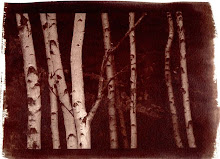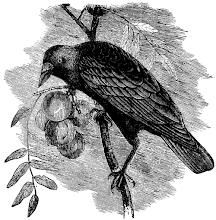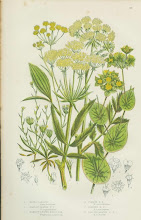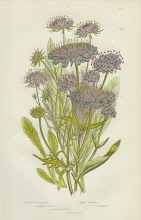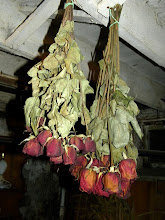Tonight's full moon is called the Full Worm Moon because this is the time of year when the ground begins to soften and thaw after the long frozen winter and earthworms begin to reappear, providing food for the recently returned robins. This moon is also known as the Full Sap Moon as this is the time when the sap begins to flow and the annual tapping of maple trees begins.
This full moon is in Libra, and as such we'll find ourselves working on our relationships, embracing love and acceptance and becoming aware of our own needs within the relationships in our lives. Libra is the sign of love, balance and acceptance.
Other names for this moon are the Full Fish Moon, the Sleepy Moon, the Chaste Moon, and the Moon of Winds. Various Native American tribal names for it are the Full Windy Moon, the Big Famine Moon, and from the Dakota Sioux, the Moon When Eyes Are Sore From Bright Snow. Its neo-pagan name is the rather ominously named Death Moon.
Monday, March 29, 2010
Thursday, March 25, 2010
Rowan Spell for Home Protection
 After you've finished your spring cleaning, why not perform a rite to ensure your home is now not only immaculate but safe as well? This simple spell uses rowan, a tree that is known for its protective properties, to provide a shield and a blessing for your home and all who live within it.
After you've finished your spring cleaning, why not perform a rite to ensure your home is now not only immaculate but safe as well? This simple spell uses rowan, a tree that is known for its protective properties, to provide a shield and a blessing for your home and all who live within it.What you'll need:
Two or three rowan twigs, about ten inches long
A Bottle of Ale
A piece of red ribbon
A small personal power chant (optional)
What you'll need to do with these things:
Gather the rowan twigs, but be sure to not cut them from a living tree. They should be found on the ground so as not to harm the tree and they also must be found at this length, not cut down to it, as that will diminish the power of the wood. When you find your twigs, pour the ale deosil (in a clockwise circle) around the base of the tree as an offering to thank it for its gift to you as well as to symbolize the potency of the spell you are about to work. With the red ribbon, bind the twigs into a cross or star shape (depending on how many twigs you use) and concentrate on the safety of your home and its inhabitants as you do this. If you've written a short and personal spell, this should be chanted here while you bind the twigs.
Place your rowan cross to your forehead as you focus on the power of your intentions, then to your heart as you feel your power, then to your lips. Seal the rowan's power in the cross with a kiss. Starting with those rooms furthest from your front door, carry your cross in your outstretched power hand, circling each room fully while feeling your intentions plainly and clearly. When you reach your front door, exit it backwards so that your cross leaves your home after you do. Secure it above your front door.
This ritual may be repeated every three to four months to ensure the potency of your talisman.
Photo courtesy of Floraworks (internet on...off...on...off) on flickr.
Labels:
deosil,
energy,
home,
intentions,
protection,
protection spell,
rite,
ritual,
rowan,
rowan tree,
spell,
spellwork,
tree
Sunday, March 21, 2010
Vernal Equinox Weekend

To ring in the spring equinox and Ostara yesterday, I went for a long walk with David and our two dogs on a lovely trail that runs close by. The weather was simply gorgeous, perfect for a leisurely walk under a late afternoon sun that was just warm enough to leave the coats and sweaters at home. We observed the blossoms and buds on the foliage, all about to pop at any moment, the sound of the birds busily making nests for the babies soon to come, the squirrels playing tag with one another around tree trunks, the crocuses peeking out from under the bushes in our front yard, and as evening set the sound of peepers calling to potential mates in the wetland behind our house.
I gave myself the weekend off from the seemingly endless spring cleaning I've been doing every weekend for the last month or so (in my usual desperate bid to finish it all before Beltane) and instead, and with only a small amount of guilt for shirking off, did little more than enjoy the beauty of the new season. I did, however, make a multi-layered yellow cake, with buttercream icing and filled with a lovely lemon egg custard and since I normally eat very little sugar, managed to get quite hyper after eating a really large slice.
The only sad note to the weekend was when a sweet little brown marmorated stink bug that had been living in my kitchen for quite some time accidentally toppled off the ivy on my windowsill and into the sink while I was working on my lemon cake and became a very interesting bit of boiled sugar decoration (that, trust me, never made it onto the cake).
I hope everyone had an equally (or even more) lovely weekend and I wish a very happy Ostara to one and all. Blessed be.
Photo courtesy of TT_MAC on flickr.
Labels:
nature,
ostara,
spring,
spring equinox,
vernal equinox
Thursday, March 18, 2010
Ostara Orange Custard
 This is a very simple little custard that not only uses the traditional Ostara ingredient of eggs, but also is the color of the still-cool spring sunshine. Garnish them with fresh cut (non-toxic) flower blossoms or the candied violets seen here recently (Candied Violets, March 3, 2010).
This is a very simple little custard that not only uses the traditional Ostara ingredient of eggs, but also is the color of the still-cool spring sunshine. Garnish them with fresh cut (non-toxic) flower blossoms or the candied violets seen here recently (Candied Violets, March 3, 2010).Ostara Orange Custard serves 4 to 6
1 cup heavy cream
1 cup organic orange juice
1/4 cup sugar
3 large eggs, lightly beaten
1 1/2 teaspoons finely grated orange rind
pinch of salt
fresh whipped cream (optional)
Preheat oven to 325f degrees. Combine all the ingredients and blend well. Pour mixture into individual custard ramekins and place the ramekins in a pan with an inch of hot water in it. Bake on the center rack for 40-50 minutes or until a silver knife gently inserted into the center of the custards comes out clean. Cool thoroughly and refrigerate until ready to eat. Top with a dollop of whipped cream and garnish with colorful flowers. Serve.
Photo courtesy of Delicious Desserts on flickr.
Labels:
bread recipe,
cream,
custard recipe,
eggs,
homemade,
orange,
orange custard,
ostara,
spring,
vernal equinox
Wednesday, March 17, 2010
Trees 101: Rowan
The rowan is a tree of many mundane and magickal uses most of which revolve around its berries. Songbirds are attracted to them, thus giving the rowan a distinct association with music, poetry and the goddess Brigid. The berries are also used for incenses and spellwork as well as in a medicinal capacity. Rowan berry tea is used to treat intestinal disorders and being high in vitamin C, rowan is also used to fight respiratory ailments. The berries are used in jams, jellies and even wine and in ancient times were believed to grant those who consumed them a very long life.
In 15th and 16th century England, rowan berries were avoided by midwives and herbalists because to be caught with them was certain to get you branded a witch. Ever take a good look at a rowan berry? They have what appears to be a pentagram at their base, thus the belief that anyone who had them in their possession was surely practicing the dark arts.
Wear a sprig of protective rowan and faeries won't be able to kidnap you, despite the belief that the rowan tree originated in the faery realm. Planting a rowan near your front door will protect your home from evil spirits and lightning strikes. Rowan is one of the nine sacred woods of the sabbat fire and represents life.
The versatile rowan tree is excellent for protection rituals, safe astral travel, divination spells (its sticks were traditionally used to make runes) and to enhance psychic abilities, as well as in powerful healing spells. It vibrates with a feminine energy and to the elements of both earth and fire. It's ruled by the planets Saturn and Uranus, as well as the Moon and Sun.
In 15th and 16th century England, rowan berries were avoided by midwives and herbalists because to be caught with them was certain to get you branded a witch. Ever take a good look at a rowan berry? They have what appears to be a pentagram at their base, thus the belief that anyone who had them in their possession was surely practicing the dark arts.
Wear a sprig of protective rowan and faeries won't be able to kidnap you, despite the belief that the rowan tree originated in the faery realm. Planting a rowan near your front door will protect your home from evil spirits and lightning strikes. Rowan is one of the nine sacred woods of the sabbat fire and represents life.
The versatile rowan tree is excellent for protection rituals, safe astral travel, divination spells (its sticks were traditionally used to make runes) and to enhance psychic abilities, as well as in powerful healing spells. It vibrates with a feminine energy and to the elements of both earth and fire. It's ruled by the planets Saturn and Uranus, as well as the Moon and Sun.
Labels:
faeries,
faery realm,
goddess,
kitchen witch,
medicinal,
moon,
nine sacred woods of sabbat fire,
pentagram,
protection,
ritual,
rowan tree,
sabbat,
sabbat wood,
spell,
spellwork,
sun,
tree,
trees
Sunday, March 14, 2010
Spring Days

It was one of those March days when the sun shines hot and the wind blows cold: when it is summer in the light and winter in the shade.
-Charles Dickens
There is something truly beautiful in the straddling of two seasons at the same time. I find it incredibly energizing to feel the warmth and the chill simultaneously, to see the green in bloom yet still be wading through the last of winter's mud and to be aware, in a very visceral way, of the changing of the seasons and the earth's wheel always, always turning. It makes me almost giddy.
Photo courtesy of bubba2tish on flickr.
Thursday, March 11, 2010
Eostre and the Hare

Once upon a time long, long ago, there wandered through the forest a little hare who was uncertain what gift to bestow upon his beloved goddess with which to honor her on her spring festival day. While wandering and pondering, he came upon a fresh egg laying on the woodland floor. The hare was absolutely delighted as eggs were a rare thing indeed and finding one was quite exciting. As much as the little hare wanted to eat the egg himself, he decided instead to gift it to Eostre. The little hare was very pleased with himself until it occurred to him that as Eostre was a powerful goddess, perhaps his plain little egg wouldn't be such a wonderful gift to someone such as her. After all, she could have as many eggs as she desired and as often as she liked. So the little hare decided to make the egg something truly special, and by making it as colorful as he could and as lovely as the beautiful goddess herself, he would show her how much she meant to him.
He took the egg to a secluded spot and began to color the egg with all the hues of springtime: the bright, vibrant colors of the trees, the grasses, the water and sky and all the flowers that were blooming. He drew many of the symbols associated with Eostre: hares and other animals, birds, all the lovely things that depicted life in all her abundance. The little hare poured all his love for his goddess into this tiny egg.
When he had finished, he presented his offering to Eostre and she was so pleased with the little hare's humble yet beautiful gift, that she asked him to go out and share this special little egg with all the world, especially the children who embody all that springtime stands for. And to this day, all the descendants of that first little hare honor Eostre's original request by bringing to all the children of the world decorated eggs to celebrate the arrival of spring and the equinox.
Photo of painted eggs courtesy of kellybielec on flickr.
Tuesday, March 9, 2010
Roots of Ostara

The sabbat name Ostara comes from the Germanic goddess Eostre, a goddess of prosperity and growth. Long forgotten for centuries and no longer celebrated nor honored with her earlier joyous feast days even as far back as the eighth century, she is, however, the namesake for the Christian festival of Easter which was named for the Anglo-Saxon month which had itself been named in honor of Eostre. This was Eostur-Monath, which is roughly our present-day April. And the name Ostara itself comes from the old High German adverb "ostar" which means "expresses movement towards the rising sun."
In early pagan worship of Eostre, hare was the typical dish served, especially in Saxon and British worship of her, as well as in Northern Europe. While little is known about Eostre, it is believed that her golden lights, as goddess of the dawn and the coming of the sun, were carried by hares. She represented sexuality and fecundity, which is not only what spring itself represents, but also what we also think of when we think of hares. And in ancient times, the sabbat of Ostara was a holy day, a day of light, a day that brought joy, blessings and new life to the world. Bonfires were lit and the fresh water drawn on Ostara morning was considered holy and healing. This day, as well as the majority of its meanings and beliefs were adopted by the Christian church as the festival celebrating the resurrection of Christ.
Whether or not you choose to specifically honor the goddess Eostre, Ostara is the sabbat that heralds that wonderful time of year when we all feel new and reborn, when life is fresh and the coming season of abundance offers so much hope and promise. How can that not feel fantastic?
"Ostara" by Johannes Gehrts, 1884, published 1901.
Saturday, March 6, 2010
Fresh Dried Herbs



With spring just around the corner, it's once again that time of year when I toss out my older, weakened herbs and lay in a fresh supply of them for spells, incenses and rituals. I've spent the last few days washing jars, making new labels for those herbs that I've never worked with but have decided that this is the year when I'm going to come up with a use for them so I better have some jars available, and casting the old no-longer-potent herbs upon the ground around my birch trees. I'm starting with just 13 this year (which is a surprising number, given my penchant for order and keeping everything even), but that number will most likely grow as more ideas start to sprout in my always-working brain.
Like everything else I do, I try to bring a bit of art into my herbal apothecary by making my jars as lovely on the outside as what rests within them. I've been using hand painted labels for a few years now. At first I thought it might be nice to do a small original painting on each, but then I decided that even I'm not that insane (yet) and so I settled for a lovely large-scale rubber stamp which allows for a uniform sized label, but which I then hand color with watercolors. I originally chose two blues and two greens, as they looked lovely with my old 19th century hand-blown blue canning jars, but then I realized that the blue and green were also sort of symbolic of the earth and sky and all that lies in between, which I rather like. And I can see the mood I was in on those days when I painted each label: some are delicate and light, while others are boldly blue and dark. The jars are crooked and old, full of little flaws in the form of bubbles in the glass and tiny chips near their rims. The metal bales are rusty, and they more than look their age. But that's okay because it reminds me of all the people who have handled them over many, many years: the men who made the jars, the women who used them to store food to feed their families during the long winter months, and then me who uses them in my quest for the spiritual and the magickal which are often one and the same. It's really all rather poetic.
Spring cleaning really does suck, but even in the midst of all the drudgery, I can still find a little beauty both in the tedium of cleaning endless jars with pretty labels and in the excitement of all the magick I'm going to create from the simple leaves, twigs and berries those jars now hold.
Labels:
19th century,
berries,
birch,
glass jars,
herbal apothecary,
herbs,
leaves,
magick,
spells,
spellwork,
spring,
spring cleaning,
twigs
Wednesday, March 3, 2010
Candied Violets

Candied violets are one of the prettiest and most delicate garnishes for all your Ostara celebration custards and cakes. Very feminine, infinitely spring-like and impossibly sweet, they'll make even more beautiful all those inevitable egg dishes this sabbat calls for.
Violets offer protection, luck, promote love (and lust!), heal, and make wishes come true. Wear a chaplet of violets and you'll cure your headache, wear them in a sachet and you'll not only heal wounds but prevent evil spirits from making them worse. Mix them with lavender and violets become a powerful love stimulant. Pick the first violet that has bloomed in the spring and all your wishes will be sure to come true. Then pick some more and you'll have enough for some lovely edible Ostara decorations.
For this recipe you will need:
20 violet flowers (at least), in excellent condition with stems intact, not treated with chemicals
1/2 cup water
1 cup granulated sugar
1/4 teaspoon pure almond extract
caster or fine sugar for sprinkling
Wash the flowers carefully by using a gentle spray of cool water. It's helpful to have them in a sieve while doing this, and having the stems will make handling them much easier. Lay them out on paper towels on a cooling rack. Dry completely.
Heat the sugar and water until sugar is completely dissolved. Add extract and mix well. Dip each flower in the sugar syrup with a pair of tweezers. Dust each blossom with the fine sugar (be sure each flower is fully coated) and remove the stems with a pair of fine scissors. Set the violets on the cooling rack once again, only this time use wax paper to prevent sticking, and be sure they are laying flat.
Move the flowers to a cool, dry place to set completely. This will take at least 24 hours, possibly more. Do not dry them in the sunlight to speed up the process as you will only end up with a batch of soggy, wilted violets. Store in an airtight glass container. If you need to layer your flowers, use a piece of baking parchment between each layer to prevent sticking. Keep out of direct sunlight and use within one month of creating.
Photo courtesy of wendy flanigan on flickr.
Labels:
candied violets,
candy,
good luck,
healing,
ostara,
protection,
recipe,
spring,
violets,
wishes
Monday, March 1, 2010
Ostara Incenses
 This is a sweet little incense you can burn for an Ostara ritual or anytime during the coming weeks to welcome Spring and honor all the life that is now being reborn.
This is a sweet little incense you can burn for an Ostara ritual or anytime during the coming weeks to welcome Spring and honor all the life that is now being reborn.2 parts Frankincense (Rosemary can be substituted)
1 part Benzoin
1 part Dragon's Blood
1/2 part Nutmeg
1/2 part Violet Petals (or a few drops essential Violet Oil)
1/2 part Rose Petals
1/2 part Orange Peel
1/4 part Cinnamon
Grind all ingredients fairly fine and burn on a charcoal in a censer.
To honor Mother Earth at this time, especially in any Earth-reverencing rituals, burn this simple incense:
1 part Pine Needles
1 part Thyme
a few drops of Patchouli Oil
Earth incense recipe courtesy of Scott Cunningham.
Oil pastel drawing, "Mother Earth, Father Sky" courtesy of plasticpumpkin on flickr. Lovely!
Subscribe to:
Posts (Atom)
